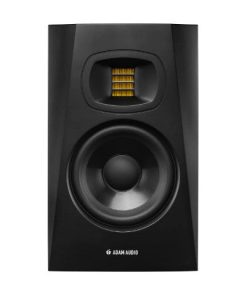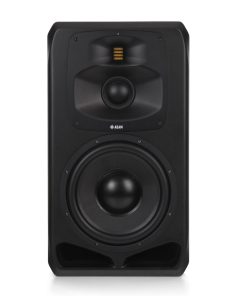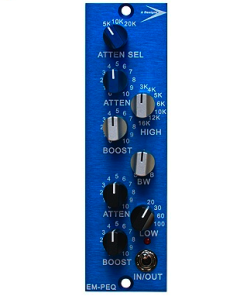IK Multimedia De-Esser – Multi-Band De-Esser Plug-In IK Multimedia
$ 74,99 $ 37,49
Frequency Conscious Dynamic Processor
De-essing is also known as “frequency dependent compression,” but whatever you call it, the idea is to control excessive sibilance (exaggerated “s” sounds), which can be particularly problematic on vocal tracks. The multiband capability is a feature that puts the De-Esser ahead of the competition making it precise and versatile on top of good sounding.
When set as 2 band mode the De-Esser works in a broader fashion, effectively reducing the high end content of the area set by the frequency selector. Switching to 3 bands mode allows more precision and control, particularly useful in situations like vocal tracks where sibilance is in a narrow range, and where there is the need to leave the higher part “air” untouched. The dedicated control set also allows you to precisely tailor the operating mode, and audition the de-essing action or the part of the audio spectrum the processor is working on.
The primary use of this processor is obviously on vocal tracks: this is where the IK Multimedia De-esser shines thanks to its multiband capability which allows to zone in with extreme precision on the troublesome frequency and put it under control.
However, there are several other instances where a de-esser can be a secret weapon where an EQ would be too a drastic solution: hi-hat or crash cymbals can sometimes sound harsh or overly bright in a mix; using an EQ would fix this, but would probably affect also the rest of the high end content of the mix. That’s where frequency conscious compression comes to the rescue: setting the De-Esser on the right frequency and threshold will allow to reduce the harshness of too bright cymbals only when they are hit, and with the precise setting of release time the action would be unobtrusive and transparent to the rest of the mix.
Also included in
- T-RackS 5 SE
- T-RackS 5 Deluxe
- T-RackS 5 MAX
- Total Studio 3 SE
- Total Studio 3.5 MAX
Prompt Delivery and Professional Packaging
Our long-standing partnership with UPS FedEx DHL and other global carriers lets us offer a range of shipping services. Our warehouse staff is extremely skilled and will package your items according to our precise and exact specifications. Your goods will undergo an extensive inspection and be safely packaged prior to being sent out. Each day, we ship to thousands of customers in many countries. The fact that we are committed to becoming the biggest online retailer in the World is clear. These warehouses are in Europe in the same way as they are in USA.
Note: Orders that include more than one item are assigned a processing period depending on the item.
Before shipping, we will inspect thoroughly the items you have ordered. Most orders are shipped within 48 hours. Expected delivery time is between 3-7 days.
Returns
Stock is dynamic. It's not entirely managed by us since we are involved with multiple entities, including the factory and the storage. The actual stock can change at any moment. It is possible that your order may be out of stock once the order has been placed.
Our policy lasts for 30 days. We cannot exchange or refund your order if it has been 30 days from the date of purchase.
For your item to be returned it must be in its original packaging, unopened and in the condition you received it. The item must be in its original packaging.
Related products
Recording Equipments
Microphones
Monitor
Subwoofer
Headphones
Recording Equipments
Accessories
Monitor
Recording Equipments
Recording Equipments
Headphones
Microphones
Microphones
Microphones
Monitor Systems
500 Series
Equalizers
Monitor Systems
Monitor
Accessories
Mic Preamp
Recording Equipments
500 Series
Accessories
500 Series
Recording Equipments





























































